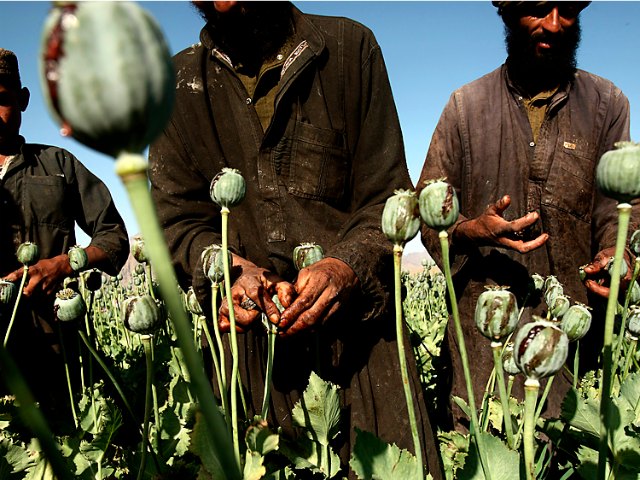John Sopko, the Special Inspector General for Afghanistan Reconstruction (SIGAR), has released a report this week warning of the threat of widespread corruption in the aftermath of the end of combat operations by US forces in the nation. With corruption comes the increased threat of a booming opium trade surfacing in the absence of U.S. military aid.
Following the end of U.S. combat operations, American and NATO forces will be engaged in an operation dubbed Operation Resolute Support, which will involve “training, advising and assisting Afghan security institutions and Afghan national security forces at the ministerial, institutional and operational levels,” according to the Pentagon.
A significant withdrawal of American support within Afghanistan, the SIGAR report notes, could increase corruption. Corruption and opium production are linked in Afghanistan, according to the inspector general.
“The expanding cultivation and trafficking of drugs puts the entire U.S. and international investment in the reconstruction of Afghanistan at risk,” mentions the report.
“Although the United States has invested approximately $7.8 billion as of September 30, 2014, in counternarcotics efforts in Afghanistan, that country still leads the world in opium production, and Afghan farmers are growing more opium than ever before,” it adds.
In January, while testifying before the Senate Caucus on International Narcotics Control, Sopko warned: “All of the fragile gains we have made over the last twelve years on women’s issues, health, education, rule of law, and governance are now, more than ever, in jeopardy of being wiped out by the narcotics trade, which not only supports the insurgency, but also feeds organized crime and corruption.”
As economic growth in Afghanistan slows due to the U.S. troops drawdown and reduction in international contributions, the opium trade could become an even greater component of the Afghan economy.
“The United Nations Office of Drugs and Crime (UNODC) estimates the value of Afghan opium and its heroin and morphine derivatives at nearly $3 billion–or the equivalent of about 15% of Afghanistan’s Gross Domestic Product (GDP)–in 2013,” reports SIGAR. “That was a substantial increase over 2012, when the value of Afghan opiates totaled about $2 billion and was equivalent to about 11% of Afghanistan’s GDP.”
U.S. reconstruction efforts may have been a contributing factor to the growth in opium production.
“Certain reconstruction efforts such as improved irrigation, roads, and agricultural assistance can actually lead to increased opium cultivation,” states the report. “SIGAR’s Special Project found that affordable deep-well technology turned 200,000 hectares of desert in southwestern Afghanistan into arable land over the past decade.”
“Due to relatively high opium prices and the rise of an inexpensive, skilled, and mobile labor force, much of this newly arable land is dedicated to opium cultivation” it continues. “Poppy-growing provinces that were once declared ‘poppy free’ have seen a resurgence in cultivation.”

COMMENTS
Please let us know if you're having issues with commenting.